Why Arkaroola’s worth visiting
The Arkaroola Wilderness Sanctuary in the Flinders Ranges is as exotic as it sounds, and we almost didn’t get there.
The debate over bacon and eggs centred on the wisdom of driving on more dirt; did we have the time, were we trying to cram in too much? We’d been to William Creek, wasn’t it better to take our time and head back to Adelaide on a leisurely drive through the Barossa Valley, stopping at the occasional vineyard along the way? (That was my suggestion.)
In the end we agreed to ‘give the road a go’, and what a treat it was; from empty dirt tracks to the outback equivalent of a tree-lined avenue.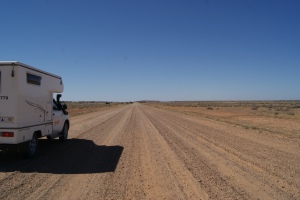
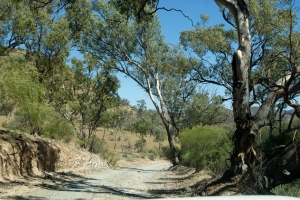
Admittedly it was a long day, with an eight-hour drive on dirt and a trackside top up of diesel that didn’t go so well. Hands cloaked in carrier bags to prevent contamination we struggled to re-fill the tank. I should have worn a bin liner. By the end of the messy operation my trousers, shoes and t-shirt were somehow drenched in diesel, and whatever money we’d saved by filling the spare canisters in Port Augusta had soaked into my clothes and disappeared into the dirt. Still, at least my hands were clean.
The great thing about a campervan is you can nip in the back, strip off your dirty clothes and sling them in a locker faster than you can dribble diesel on dirt – and a lot faster than it takes to start speaking to the driver again.
The Oodnadatta track from William Creek to Marree was long, straight and flat – an easy drive even for the inexperienced. Stay on that road and you join the Birdsville track that skirts the edge of the Strzlecki Desert; turn off and you head south to Lyndhurst, Leigh Creek and Copley.
The plan was to camp overnight at Copley if the road to Nepabunna and Arkaroola proved too challenging, but from Copley the Northern Flinders Ranges were tantalisingly close so we pushed on, leaving the flat dirt road for the dip and swoop of smaller tracks, criss-crossing dry creek beds littered with stones.
The landscape changed as dramatically as if we’d driven onto a film set for Lord of Rings.
We could have parked in a creek bed for an overnight stop but with Arkaroola so close we kept going, wary of wildlife as the sun slipped lower and marvelling at the changing scenery. In all the hundreds of trips Clyde made back and for when he worked at Arkaroola in the late 1960s and early 1970s he nearly always flew, so the drive was a revelation for him too.
Arriving late we parked on flat ground high up in the ranges and woke to an unspoilt, pristine environment with clean air and rugged views (and a decent shower block) – everything you’d hope to find on an outback camping adventure.
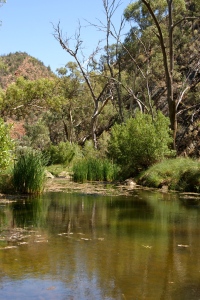 The tracks at Arkaroola are challenging and a 4WD vehicle is the only way to visit waterholes, where you can spot yellow-footed rock wallabies and sit quietly reading in the sunshine. Lord of the Flies was an impromptu choice from Balmain Library but it turned out to be the right one, not least because there were flies everywhere (thanks for the hat Sue, it came in handy).
The tracks at Arkaroola are challenging and a 4WD vehicle is the only way to visit waterholes, where you can spot yellow-footed rock wallabies and sit quietly reading in the sunshine. Lord of the Flies was an impromptu choice from Balmain Library but it turned out to be the right one, not least because there were flies everywhere (thanks for the hat Sue, it came in handy).
That night Doug Sprigg, whose famous father Reg Sprigg established Arkaroola in the late 1960’s, offered us an unexpected treat. With clear skies and no light pollution, Arkaroola is one of the best places in the Southern Hemisphere to see stars and Doug has not one but two magnificent domed observatories, two computer controlled telescopes and several reclining ‘star chairs’.
It was silent and still on top of that hill, and with Doug guiding the telescope we saw Jupiter; we saw the Sombrero galaxy two hundred million, million, million kilometres away; we saw the eta carina emission and absorption nebulous; and we saw entire galaxies that with the naked eye look like a single star but in fact contain a million more stars. It was utterly magical.
Doug was full of fascinating facts and, like an eccentric professor, he was eager to pass on his knowledge. The next day I learnt that there are deposits of uranium near Arkaroola and the mine owners have discovered a bacteria with a self-repairing gene that fixes the damage done by radiation; I learnt that 900 million years ago the USA and Canada used to be attached to Arkaroola until those land masses broke off and for the next 400 million years the sea bed gradually built up. Now the biggest deepest reef on earth is 800 feet above sea level, in the Flinders Ranges.
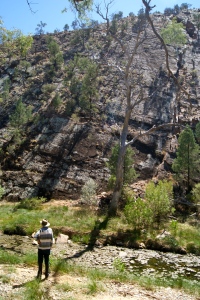
But all you really need to know is that Doug Sprigg is delightful and he and his sister Marg are the most friendly, welcoming hosts; that you can camp or stay in comfortable accommodation at Arkaroola; and there’s a swimming pool, a bar, good food and friendly staff.
It’s the most beautiful, unspoilt wilderness and I’d go back tomorrow if I could.

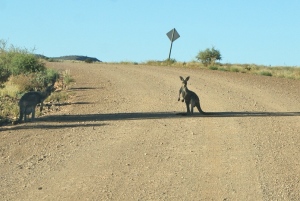
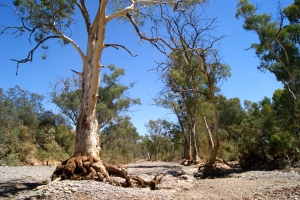

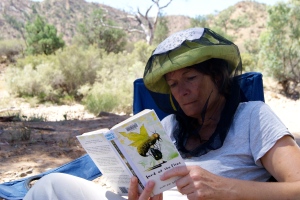
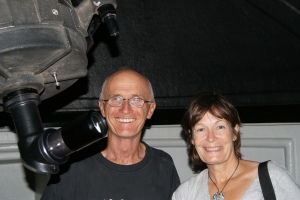
Great post about a picturesque trip, Deb. I’d like to be there.
LikeLike
Thank you, I’m sure they’d like to have you visit!
LikeLike
Wonderful Deb, thank you for taking me there, as I doubt I’ll ever get that far! 🙂
LikeLike
Thanks Barbara and you never know. I certainly never expected to visit Arkaroola!
LikeLike
This is great travel writing, Deb! Very vivid – feels like I’ve just been watching it on telly. And the Outback does seem such an extraordinary place: raw planet – like Yorkshire in August!
LikeLike
Gosh it’s not that wild Django. Hoping to visit Yorkshire later this year, I’ll let you know when plans are finalised!
LikeLike
Arkaroola seems to reveal an unsullied face of earth and your vivid description carries the essence of its untainted heart to us. It is comforting news that not many people are aware of its existence. Otherwise, it will not remain such an unspoilt place as it is now. I hope you have the chances of indulging in many such trips. We can live through such journeys with the help of your blog 🙂
LikeLike
Thank you for that reply. I’ve thoroughly enjoyed exploring your playground at Ipseand and I’m delighted that we can all keep discovering new places to play!
LikeLiked by 1 person
Thank you for taking time out to visit Ipseand!
Yes, our playtime is getting too much encroached upon since early childhood. Perhaps, we need to get in touch with our playful self a little more than usual:)
LikeLiked by 1 person
Wonderful review of this fascinating place – The landscape is so wild and precious!
LikeLike
Thanks Eliza, it is a very special place
LikeLike
Envy you that night sky!
LikeLiked by 1 person
Actually, envy you all of it …
LikeLike
I would not have visited such a special place if I hadn’t met Clyde, so like the song says, “…somewhere in my youth, or wicked childhood, I must have done something good.” Hope the fire is keeping you warm over there and that your elusive lover will come out to play soon!
LikeLike
I couldn’t find the like button (it’s vanished?) but I just wanted to say I enjoy your travel writing 🙂
LikeLiked by 1 person
Thank you Scribbley, my ramblings through the back end of wordpress obviously cancelled the like button somehow, hope it’s back now!
LikeLiked by 1 person